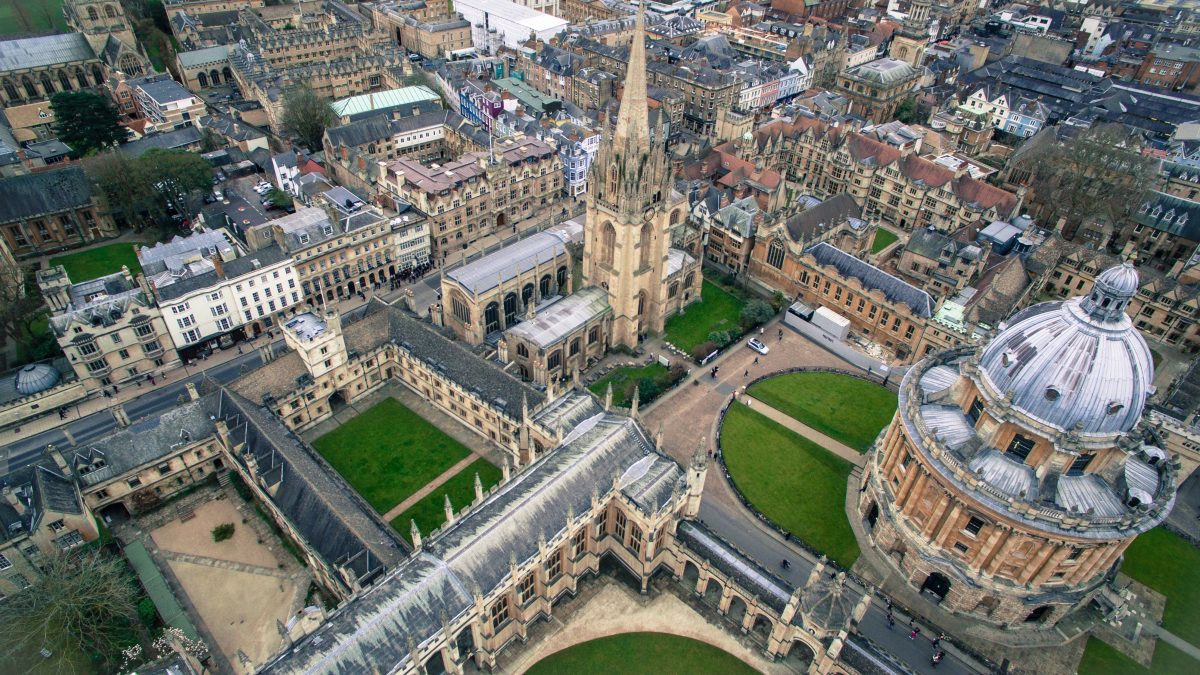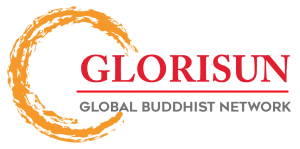[Photo by Sidharth Bhatia on Unsplash.]
An International & Intensive Program on Buddhism at Oxford
(August 11–30, 2019; Oxford, United Kingdom)
| Schedule | Lecture Series | Student Participants |
| Young Scholars Forum | Conference | Student Reports |
The Glorisun Global Network of Buddhist Studies, whose founding members include Peking University, UBC, Princeton, Yale, UCBerkeley, Harvard, UHamburg, Cambridge, Oxford, and the University of Hong Kong, cordially invites applications for an intensive program on Buddhist Studies. Lasting for three weeks from August 11 to August 30, 2019, this program is composed of two segments: Segment 1 from August 11 to August 19 and Segment 2 from August 23 to August 30, which are connected by an intersegmental conference and forum (August 20–22; detailed below).
The backbone of this program consists of a series of seminars delivered by five international scholars. Each seminar combines close reading of primary sources (non-Chinese primary sources may be accompanied by English translations), lectures on the implications of these sources, and guided presentations from participating students on their research, which could be their term papers, or thesis chapters. The five instructors for this year’s intensive program include, alphabetically:
- Imre Galambos (Cambridge): Manuscripts and Lay Donors in Medieval Dunhuang 中古敦煌的寫本與在家功德主 (Segment 1);
1. Manuscript culture at Dunhuang
2. Scrolls commissioned by the court
3. The flat book in Dunhuang
4. Devotional manuscripts
5. The hand that holds the brush
6. Scribal devices
7. Lay donors
8. Colophons for deceased parents
- Carmen Meinert 梅開夢 (Ruhr-Universität Bochum, ERC Project BuddhistRoad): Tibetan Tantric Transmissions in the Tangut Empire as Seen in Materials from the Karakhoto Collection 黑水城漢書所見藏傳密教在西夏帝國的傳播 (Segment 2);
- Historical Context: Shifting Political Dominions in Eastern Central Asia Between the 8th and 13th Centuries and its Impact for the Spread of Tantric Buddhism Eastward
- Semantic Context: Meaning, Doxographies, and Transmissions of Tantric Buddhism
- The Tangut Empire and Patronage of Tantric Buddhism in the 11th to 13th Centuries
- Reading 1 (Chinese Karakhoto manuscript)
- Tantric Buddhist Meditation Practice and the Senses
- Reading 2 (Chinese Karakhoto manuscript)
- Time and Space and Tantric Buddhist Meditation Practice
- Stefano Zacchetti (Oxford): The Da Zhidu Lun and the Formation of Mahāyāna Exegesis in Indian and Chinese Buddhism 《大智度論》與印中大乘釋論的形成 (Segment 2);
- The Da zhidu lun’s translation and its historical significance.
- The Da zhidu lun and the Larger Prajñāpāramitā.
- Reading seminar 1.
- The Da zhidu lun as a commentary.
- Reading seminar 2.
- Some Doctrinal aspects of the Da zhidu lun.
- Reading seminar 3.
- Ru Zhan (Peking University): Ancient Indian Sanskrit Classics on Literary Theories: Translation and Study 印度古代梵文文藝學經典翻譯與研究 (Segment 1);
- Monica Zin (Saxon Academy of Sciences and Humanities / Leipzig University): Buddhist Narratives in Art, from India to Central Asia 藝術中的佛教敘述:從印度到中亞 (Segment 2).
1. Archaic Art and Aniconical Beginnings (Bharhut, Sanchi, Bodhgaya)
2. Mathura and Gandhara and the pre-Kushana and Kushana Period; the Creation of the Buddha’s Image
3. Andhra under the Satavahanas and the Iksvakus (Amaravati, Kanahagahalli, Nagarjunakonda)
4. Ajanta – a Witness of the Paintings of Old India
5. The Indian Art of Gupta and Pala-Art as Prototypes for Birma and Tibet
6. From India to China: Buddhist Central Asia
7. Paintings in the Cave Temples in Kucha and their Pictorial Programmes
The intersegmental conference (scheduled for August 20–21, 2019) for this year’s intensive program will be on Buddhist Epigraphy that will bring together around 25 top scholars from all over the world who will delve into different aspects of epigraphic culture of different Buddhist and non-Buddhist traditions in Central and East Asia. Student participants are encouraged to attend and, shall they get relevant papers, present at the conference. Details of the conference are available at here.
The program also supported a series of occasional lectures, to be delivered by five top scholars, both based in Europe and coming from East Asia and North America. In addition to participating in these seminars, lectures and the intersegmental conference, student participants will conduct several field trips in Oxford and neighboring areas, to gain firsthand experience of famed religious sites. They are also encouraged to present their research papers to their program instructors, lecturers, and their peer participants. Outstanding students will be selected and invited to carry out short-term (6-12 months long) research at UBC and UBC’s partner universities in East Asia, Europe and North America that are linked together through a large SSHRC-sponsored international and interdisciplinary project on Buddhism and East Asian Religions (www.frogbear.org). This may further bring them the opportunity of pursuing doctoral degrees or doing postdoctoral research at these top universities.
Participants are required to take part in all of the activities supported by the program, including the lecture series, the conference, students’ forum and field trips. Senior undergraduate students and graduate students specializing in any Buddhist tradition(s), and postdoctoral fellows working on relevant fields, are encouraged to apply. Please direct applications and inquiries to FrogBear.Project@ubc.ca. Please submit applications before April 15, 2019. Each application should include (1) an application form (to be provided upon request via the above email address), (2) updated curriculum vitae, (3) one writing sample, and (4) a reference letter (to be emailed by the referee directly to the above email address). Priority will be given to those applicants who are able to participate in both segments, although applications may also be considered from applicants who can only take part in one segment due to compelling reasons.
To guarantee sufficient interaction of student participants with instructors and between student participants themselves, student enrollment is limited to 35. In addition to being exempted from all tuition and administration fees, a successful candidate may receive a subsidy ranging from US$500–2,000 (depending on his or her individual needs and the distance s/he has to travel for the program) that will help defray program-related expenses, including lodging, meals, and transportation.
Expected Costs:
St Anne’s College (Woodstock Road, Oxford)
Accommodation (includes breakfast)
49.50£/day (940.50£ total)
Lunch (Aug 12–17, 20–28)
18.20£ each (273£ total)
Total Cost: 1213.50£ (≈US$1,600)
Students are awarded a subsidy based on the distance of travel. Costs for lodging will be deducted from the subsidy, with any remainder to be used as reimbursement for partial airfare and/or meals.
Schedule
- Segment 1 (August 11–19)
1.1. August 11: arrival at Oxford
1.2. August 12–17: seminars
1.3. August 18: Tour 1
1.4. August 19: break
- Intersegmental Conference and Student Forum (August 20–22)
2.1. August 20–21: conference
2.2. August 22: Youth Forum
- Segment 2 (August 23–30)
3.1. August 23–28: Seminars
3.2. August 29: Tour 2
3.3. August 30: Departure
This is our annual Intensive Program of Lectures Series, Conference/Forum, and Fieldwork on Buddhism and East Asian Cultures (this year to be held at Oxford), sponsored by the UBC SSHRC partnership project of Buddhism and East Asian Religions (www.frogbear.org) and the Glorisun Global Network of Buddhist Studies (glorisunglobalnetwork.org).



